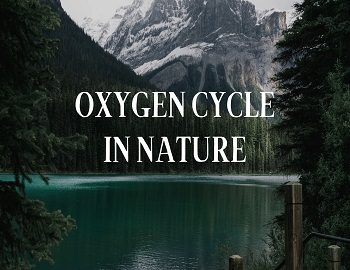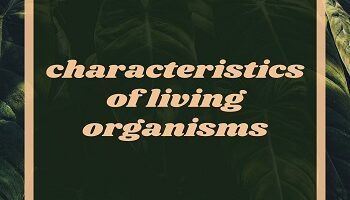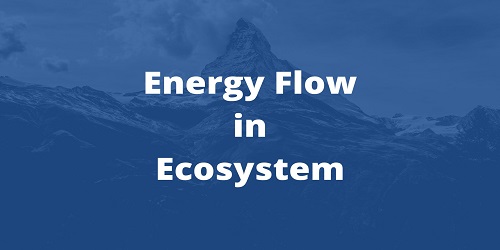
Oxygen Cycle:
Oxygen is the second most abundant element in the earth’s atmosphere. Oxygen forms about 20.9 percent of the atmospheric gases. Oxygen is an essential element for the building up of living organisms and their life processes such as respiration. Oxygen exists in free molecular form as oxygen gas O2. Oxygen is present in dissolved form in water bodies like ponds, lakes, rivers, and oceans, and helps in the survival of aquatic organisms (water-living organisms) like water plants and fish. Oxygen is also present in compound forms like carbon dioxide (CO2) and water (H2O). Thus, oxygen also enters and leaves the living bodies in compound forms such as carbon dioxide and water. For example- oxygen enters the living bodies such as green plants in the compound forms like CO2 and H2O during the process of photosynthesis. Oxygen leaves the living bodies in compound forms such as CO2 and H2O during respiration.
The main steps of the oxygen cycle in nature are as follows-
- The living organisms like plants, animals, and decomposers take oxygen from the atmosphere (or from water) and utilize it for respiration. During respiration, oxygen is converted into carbon dioxide and water. The decay or decomposition of dead organisms like plants and animals by decomposers such as bacteria and fungi also utilizes oxygen from the atmosphere and produces carbon dioxide and water. Now, the products of respiration of organisms as well as the products of decay of dead organisms, carbon dioxide, and water, go into the surrounding air.
- The combustion of fuels (or burning of fuels) such as wood, coal, natural gas, and petroleum products in homes, transport, and industry also removes oxygen from the atmosphere for the combustion process. The products of the combustion of fuels are also carbon dioxide and water vapor which go into the atmosphere. Thus, the plants, animals, decomposers, and fuels remove oxygen from the atmosphere and return carbon dioxide and water vapor to the atmosphere.
- The carbon dioxide and water vapor produced during the respiration of living organisms; decay of dead organisms and the combustion of fuels are utilized by green plants in the presence of sunlight and chlorophyll to prepare carbohydrates by photosynthesis. Oxygen gas is released to the atmosphere during the process of photosynthesis. Thus, free oxygen gas is added to the atmosphere as a by-product of photosynthesis, and in this way, the oxygen cycle in nature is completed. In fact, the major source of oxygen or major supplier of oxygen to the atmosphere is green plants which supply oxygen to the atmosphere through the process of photosynthesis.
From the above we conclude that the process which remove oxygen from the atmosphere are –
- Respiration of living organisms.
- Decomposition of dead organisms.
- Combustion of fuels.
On the other hand, the process which adds oxygen to the atmosphere is-
- Photosynthesis.
Thus, the oxygen of the atmosphere is in a state of dynamic equilibrium. The 20.9 percent concentration of oxygen in the atmosphere is essentially the result of an equal rate of removal by oxidative processes of respiration of living organisms, the decay of dead organisms, and the combustion of fuels; which is balanced by an equal rate of replenishment of oxygen by photosynthesis. Due to this oxygen cycle in nature, the amount of oxygen in the atmosphere remains at almost a constant value. Human activity has not had much effect on the oxygen content of the atmosphere, because it is always replenished (or) restored by photosynthesis.









Comments (No)